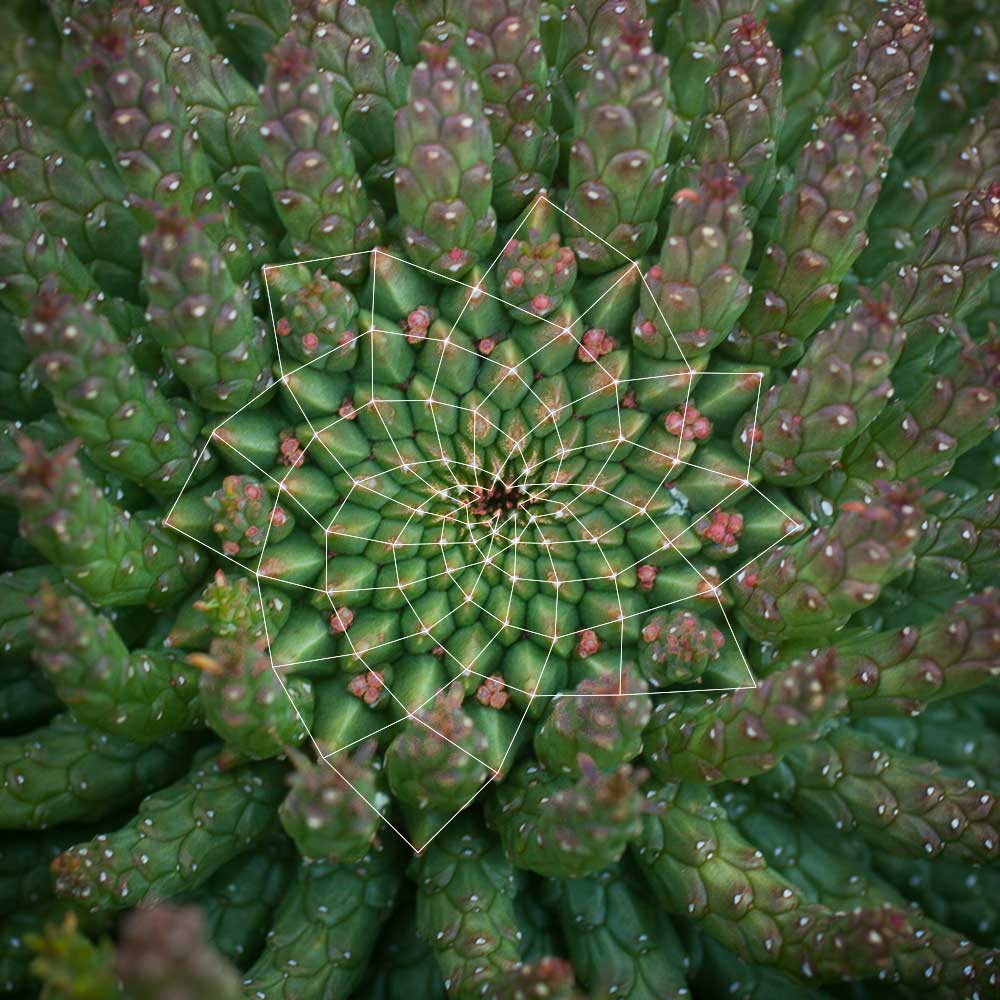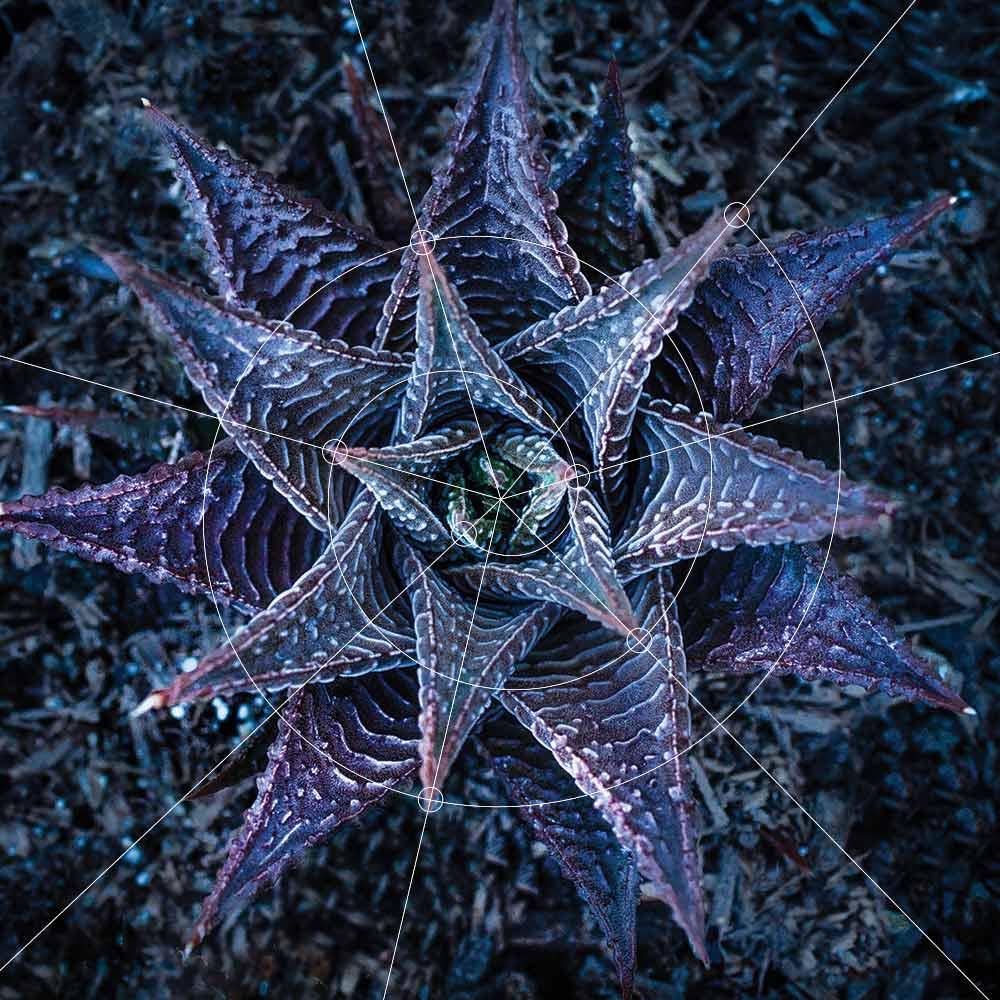of Los Angeles publishes a quarterly journal, Psychological Perspectives. I’ve served as its graphic designer for 18 years, primarily in collaboration with Nancy Mozur, the magazine’s art editor.
Nancy begins each issue by identifying an artist whose work is appropriate for the chosen theme. Nancy and I gather suitable samples and from those we select the best images for the front and back covers. For most issues, we pick several additional images to appear on inside pages. I then lay out the covers and inside pages.
Quite out of the blue, for the Winter 2018 issue Nancy tapped me to create the cover art. The issue theme is “Number, Matter, and Psyche.”
I happily accepted the assignment, and immediately thought of some photographs Dennis Keeley had posted on Facebook; all were images from his garden, and several of them were succulents. Dennis’ images are gorgeous, and many illustrate a sort of geometry I’d learned about in school.
Jayme Odgers, a professor at Art Center College of Design, introduced me to the Fibonacci sequence of numbers and the Golden Mean, a ratio based on the Fibonacci series. In that sequence, each number is the sum of the two preceding numbers; the simplest series begins 1, 1, 2, 3, 5, 8, 13, 21, 34, etc. The higher the numbers in the sequence go, the closer the ratio of any two adjacent numbers comes to the Golden Mean (or Golden Ratio), which is 1:1.618…
Researching these concepts, I learned that nature manifests the Golden Mean in countless ways, from the spiral arms of galaxies to the curves of a nautilus shell. Many plants grow in ways that reflect these mathematical relationships, too. It even shows up in our genes — a DNA molecule measures 34 angstroms by 21 angstroms at each full cycle of the double helix spiral.
The image above depicts growth as two intersecting spirals. The one appearing to grow in a clockwise direction contains eight “arms”; the other, thirteen. This pattern is evident in sunflowers, Romanesco cauliflower, and many other plants, albeit with different pairs of numbers from the series.
The image below shows how leaves sprout in a counterclockwise manner, at a consistent angle. The Golden Angle (where the ratio of two arcs in a circle approximates 1:1.618) is 137.5°; many plants conform to that cycle. Charting the growth of this handsome plant, however, I found that the leaves grew at angles averaging a bit more than the prescribed ratio. Nature makes the rules, and Nature can break them!
There is elegance in the numerical sequence and there is an irrefutable aesthetic appeal in manifestations of the Golden Ratio in nature. How and why this is remains a mystery to scientists and artists alike.
Dennis Keeley is the former chair of the Photography and Imaging Department at Art Center College of Design. After almost two decades as chair, he has withdrawn from the antiquated framework of institutional higher education over conflicts with tuition costs, lack of diversity, politics, and institutional fears of change. He dedicates his time now to making photographs, writing, reading, walking, gardening, reviews, private instruction, personal projects, and going for long drives in his convertible without any particular destination… it’s the journey.
Info about Psychological Perspectives, and front covers of many issues I’ve worked on can be seen here.

